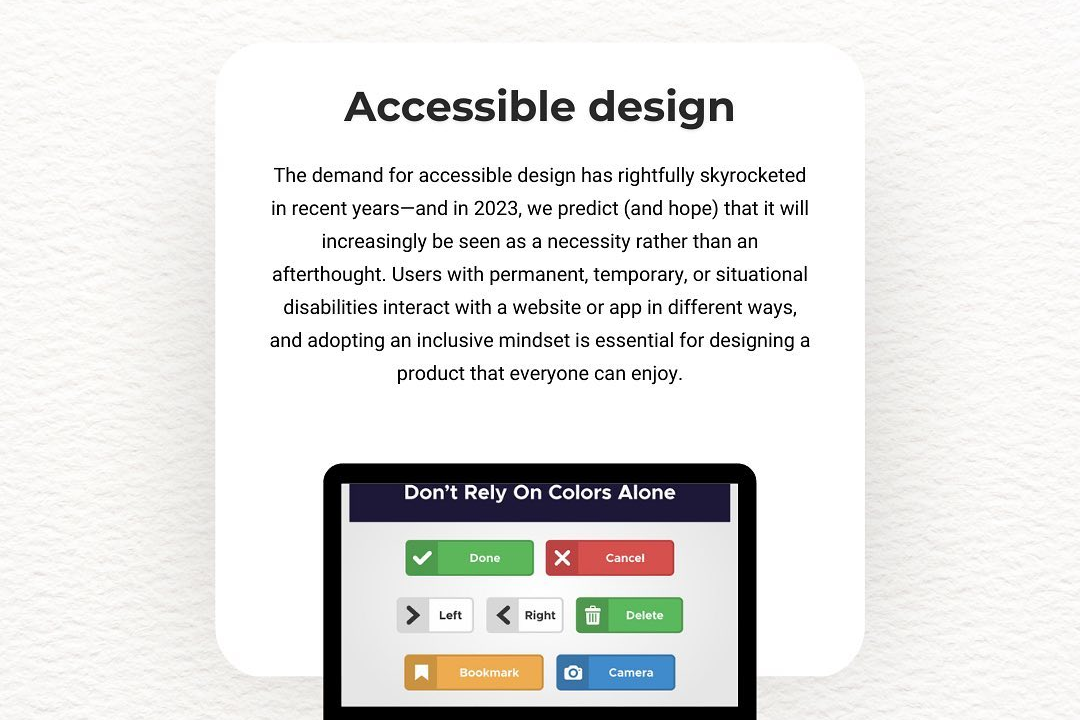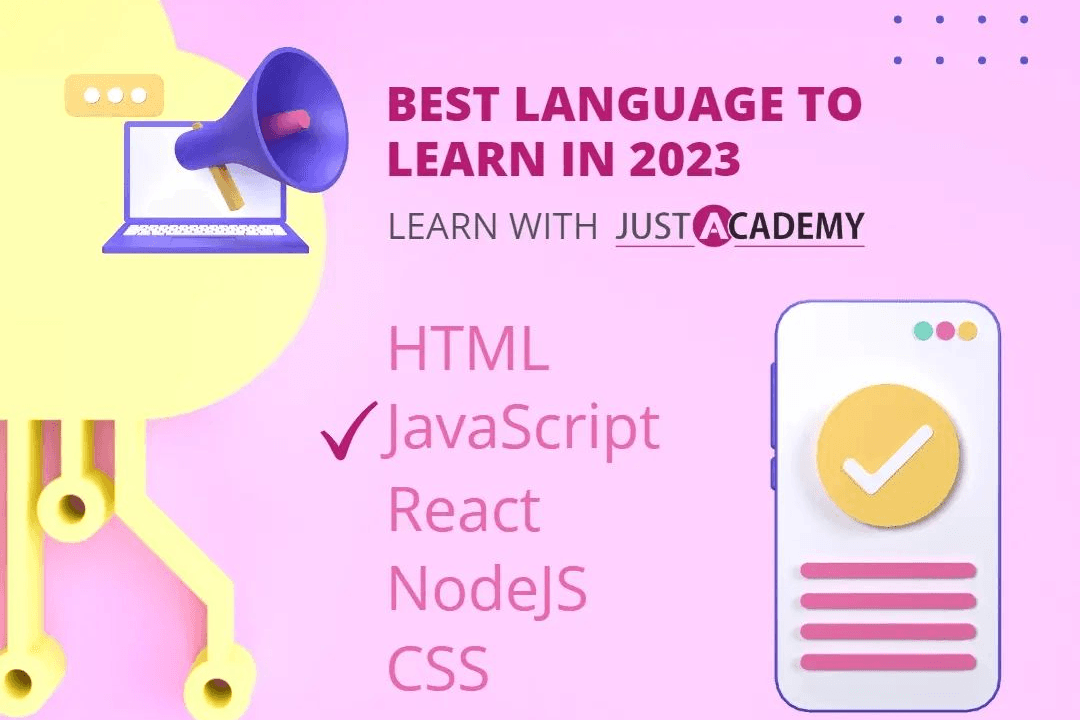for Loop Program Question in PHP
A for loop in PHP is a control structure that allows you to execute a block of code repeatedly for a
for Loop Program Question in PHP
A for loop in PHP is an essential programming construct that enables developers to perform repeated tasks efficiently, especially when the number of iterations is known beforehand. It streamlines code by eliminating the need to write repetitive statements, making scripts more concise and easier to manage. For example, using a for loop, you can easily generate dynamic content, process array elements, or perform calculations multiple times without manual duplication. This capability not only enhances productivity but also ensures robust, maintainable code, which is particularly valuable when dealing with real-time projects and large datasets.
To Download Our Brochure: https://www.justacademy.co/download-brochure-for-free
Message us for more information: +91 9987184296
A for loop in PHP is an essential programming construct that enables developers to perform repeated tasks efficiently, especially when the number of iterations is known beforehand. It streamlines code by eliminating the need to write repetitive statements, making scripts more concise and easier to manage. For example, using a for loop, you can easily generate dynamic content, process array elements, or perform calculations multiple times without manual duplication. This capability not only enhances productivity but also ensures robust, maintainable code, which is particularly valuable when dealing with real time projects and large datasets.
Course Overview
The ‘For Loop Program Question in PHP’ course provides a focused overview of using for loops in PHP programming. It covers fundamental syntax, practical examples, and real-time project applications to help learners master iterative coding techniques efficiently.
Course Description
The ‘For Loop Program Question in PHP’ course teaches the fundamentals of implementing for loops in PHP for efficient iteration, including syntax, practical examples, and real-world project applications to strengthen coding skills.
Key Features
1 - Comprehensive Tool Coverage: Provides hands-on training with a range of industry-standard testing tools, including Selenium, JIRA, LoadRunner, and TestRail.
2) Practical Exercises: Features real-world exercises and case studies to apply tools in various testing scenarios.
3) Interactive Learning: Includes interactive sessions with industry experts for personalized feedback and guidance.
4) Detailed Tutorials: Offers extensive tutorials and documentation on tool functionalities and best practices.
5) Advanced Techniques: Covers both fundamental and advanced techniques for using testing tools effectively.
6) Data Visualization: Integrates tools for visualizing test metrics and results, enhancing data interpretation and decision-making.
7) Tool Integration: Teaches how to integrate testing tools into the software development lifecycle for streamlined workflows.
8) Project-Based Learning: Focuses on project-based learning to build practical skills and create a portfolio of completed tasks.
9) Career Support: Provides resources and support for applying learned skills to real-world job scenarios, including resume building and interview preparation.
10) Up-to-Date Content: Ensures that course materials reflect the latest industry standards and tool updates.
Benefits of taking our course
Functional Tools
1 - PHP Integrated Development Environment (IDE): Utilizing popular IDEs such as Visual Studio Code, PHPStorm, or Sublime Text, students learn to write, debug, and manage their PHP code efficiently. These tools offer syntax highlighting, code suggestions, and real time error detection, which accelerates learning and enhances productivity. Familiarity with IDEs also prepares students for professional development environments, making them comfortable with tools used in the industry. During training, hands on sessions include setting up these IDEs, configuring necessary extensions, and optimizing the environment for seamless coding experiences. The IDEs help students visualize their code structure clearly, aiding debugging and maintaining clean coding standards, especially when dealing with complex for loop logic in real time projects. This exposure ensures students not only master coding concepts but also become adept at using industry standard tools, preparing them for real world software development tasks.
2) PHP Documentation and Online Resources: Access to official PHP documentation and trusted online resources like Stack Overflow, MDN Web Docs, and PHP.net forms a critical part of the training. Students learn to rely on these repositories for understanding syntax, functions, and best practices while solving for loop questions. These references serve as quick guides to troubleshoot issues, learn advanced features, and explore new functionalities, encouraging self sufficiency. During the course, students are guided on how to effectively search for solutions, interpret documentation, and implement their learnings into practical code. Leveraging online communities and resources not only accelerates problem solving but also cultivates a habit of continuous self learning and staying updated with the latest PHP developments.
3) Version Control Systems (VCS) Git: Teaching the use of Git introduces students to modern version control practices vital in collaborative development environments. Students learn to create repositories, commit changes, branch out for experiments, and merge code while working on for loop programs. Understanding Git empowers learners to track code history, revert errors, and collaborate seamlessly with peers or mentors. In training, students practice installing Git, initializing repositories, and working with platforms like GitHub or GitLab, simulating real world project workflows. Mastery over version control not only enhances their coding discipline during program exercises but also prepares them for team based projects, code sharing, and maintaining project integrity over time.
4) Command Line Interface (CLI): Students gain familiarity with the command line environment, enabling them to execute PHP scripts instantly without reliance on graphical interfaces. This skill involves navigating directories, running PHP scripts via terminal commands, and understanding command line options for debugging and output management. During training, exercises focus on executing for loop programs directly through CLI, which reinforces understanding of server side scripting and speeds up testing processes. Familiarity with CLI enhances workflow efficiency, especially when working on larger, more complex projects that involve multiple scripts or automation. It also lays the foundation for integrating PHP with other command line tools, scripting automation, and managing deployment processes, essential skills for professional developers.
5) Debugging Tools and Plugins: Incorporating debugging tools such as Xdebug and PHP Debug Bar introduces students to in depth code analysis capabilities. These tools help identify logical errors, variable states, and performance bottlenecks within for loop implementations. During the course, students learn how to set breakpoints, step through code execution, and monitor variable values in real time, thereby understanding precisely how for loops operate during runtime. Debugging tools significantly improve the troubleshooting process, making it easier to optimize code efficiency and correctness. Attaining proficiency in these tools is crucial for developing high quality, bug free programs and building confidence in handling real time project challenges, ensuring students are well prepared for professional debugging tasks.
6) Code Testing and Validation Tools: Tools such as PHP Unit or PHPUnit facilitate writing automated tests for for loop programs, ensuring robustness and correctness. Students are introduced to testing frameworks that allow them to create test cases, run validations, and verify output accuracy systematically. Training sessions include how to integrate testing tools into their development workflow, interpret test results, and write maintainable test scripts. Emphasizing test driven development (TDD) habits promotes disciplined programming and helps identify issues early in the development cycle. These tools also serve as practice for writing reliable, error free code, which is an essential aspect of delivering professional grade applications, especially when working on complex logic involving loops and conditionals.
7) Database Management Tools (Optional): For advanced training, students may explore database tools such as phpMyAdmin, MySQL Workbench, or SQLite management interfaces. These tools help them understand how to fetch, store, and manipulate data in database tables, which can be integrated within PHP for loop programs. Learning to connect PHP scripts with databases exposes learners to real time project scenarios like data processing, reports generation, and dynamic content creation. Training involves setting up databases, executing queries, and handling database results within PHP code, using loops to iterate over dataset results. This exposure enhances understanding of back end data management, making their skill set more comprehensive and applicable in full stack web development projects.
8) Code Collaboration Platforms: Platforms such as GitHub and Bitbucket are used to teach students collaborative coding practices. They learn to push their for loop program code, review peers' work, and contribute to joint projects. These platforms facilitate code sharing, issue tracking, and documentation, which are integral to modern development workflows. During the training, students practice creating repositories, managing pull requests, and participating in code reviews, fostering teamwork and communication skills. This collaborative environment simulates real world scenarios where multiple developers work on the same project, emphasizing code quality, consistency, and peer feedback. Mastery of these tools prepares students for professional projects where collaboration, version control, and continuous integration are vital components.
9) Online Coding Platforms and Practice Environments: Services like Replit, CodePen, and online PHP editors are integrated into the training for live coding practice. These platforms enable students to write, execute, and test their for loop scripts instantly without local setup, promoting rapid learning. The interactive environment encourages experimentation, immediate feedback, and iterative improvement, making learning engaging and effective. During workshops, students use these tools to solve for loop questions, test various scenarios, and observe outputs in real time. Access to these platforms helps reinforce key concepts and provides a risk free space for honing coding skills, especially for beginners unfamiliar with local setup processes. They also serve as excellent tools for remote learning, enabling students to practice anytime, anywhere.
10) Project Management and Workflow Tools: Incorporating tools like Trello, Jira, or Asana introduces students to organized project workflows. They can plan, assign tasks, track progress, and document their work on for loop exercises and larger projects. This new understanding fosters discipline in managing coding assignments, deadlines, and collaborative efforts, critical for professional success. During training, students learn to break down complex programming tasks into manageable sprints, set milestones, and record their learning journey. These tools promote transparency, accountability, and efficient teamwork, preparing students for real world scenarios where project management and clear communication are crucial. Mastering these tools enhances not only their coding skills but also their ability to deliver projects systematically and effectively.
11 - Code Snippet Libraries and Repositories: Accessing repositories like GitHub Gist, Stack Overflow snippets, or custom code libraries allows students to reuse and adapt existing for loop implementations. They learn best practices for integrating these snippets into their projects, customizing them to suit specific requirements, and contributing back to the community. During training, students explore how to search for relevant code snippets, evaluate their quality, and incorporate them efficiently. This practice accelerates development time, fosters understanding of diverse coding styles, and encourages knowledge sharing. Building a personal library of reliable code snippets also serves as a valuable resource for future projects, enhancing productivity and coding confidence.
12) Continuous Integration and Deployment (CI/CD) Tools: Introducing learners to CI/CD pipelines like Jenkins, Travis CI, or GitHub Actions enables automated testing, code validation, and deployment workflows. Students understand how to set up automated runs for their PHP code involving for loops, ensuring code quality at every stage. During training, they simulate real time project deployments, observe build statuses, and troubleshoot pipeline issues. Familiarity with CI/CD practices ensures that code is consistently tested and ready for production, reducing manual effort and errors. Mastering these tools prepares students for integrating their coding workflows into corporate environments where automation and rapid iteration are essential.
13) Code Profiling and Performance Monitoring Tools: Learning to use tools like Xdebug profiler, Blackfire, or New Relic helps students analyze runtime performance of their PHP code, especially loops with large data sets. They identify bottlenecks, optimize loop logic, and improve efficiency through detailed profiling reports. During practical sessions, students compare different loop implementations, observe memory usage, and apply improvements based on profiling insights. This skill is vital for developing high performance applications that can handle real time data processing or large scale computations, aligning training with industry demands for efficient and scalable coding.
14) Front End Developer Tools for Visualization: Tools like Chrome DevTools or Firefox Developer Tools enable learners to visualize the output of PHP scripts, monitor network requests, and debug dynamically generated content involving loops. While primarily back end focused, understanding how PHP integrates with front end visualization helps students grasp full stack development better. In training, students observe how data processed in loops is rendered in the browser, identify issues with output display, and improve user experience. This holistic understanding enhances their ability to build responsive, data driven web applications that effectively communicate backend logic to end users.
15) Multi language Integration and API Tools: Introducing students to REST API testing tools such as Postman or Insomnia allows exploration of how PHP scripts interact with external services. They learn to send and receive data via APIs, which can involve complex looping over data fetched from APIs in real time projects. During training, students practice making API calls, parsing JSON responses, and handling errors, integrating these into their PHP projects. This knowledge extends their capabilities beyond isolated scripts, enabling them to develop dynamic, connected applications vital in today's interconnected web ecosystem.
16) Code Review and Quality Analysis Tools: Tools like PHP_CodeSniffer, PHPStan, or Psalm help maintain high coding standards by analyzing for loop code and overall project quality. Students learn to identify and correct coding style violations, potential bugs, and static analysis errors. During sessions, they run these tools on their scripts, interpret reports, and modify code accordingly. Emphasizing code quality improves maintainability, readability, and reduces bugs in real time projects, fostering professional development discipline early in their learning journey.
17) Learning Management and Interactive Quizzes Platforms: Platforms such as Moodle, Kahoot, or Codio can be integrated into the training to deliver quizzes, interactive challenges, and assessments related to for loop concepts and PHP programming. Students can test their understanding, earn badges, and compete with peers, making the learning process engaging. During courses, these tools facilitate instant feedback, reinforce key concepts, and track progress. Incorporating gamification maintains motivation and solidifies knowledge through practical application, ensuring comprehensive grasp of looping structures and related programming fundamentals.
18) Cloud Based Development and Hosting Platforms: Using services like AWS, Microsoft Azure, or Google Cloud Platform, students learn to deploy PHP applications involving loops in a cloud environment. They understand the nuances of server configuration, resource management, and deployment pipelines. During training, students practice pushing code to cloud servers, configuring web services, and managing virtual environments. These skills are essential for deploying scalable, real time applications and understanding cloud infrastructure's role in modern software development. This exposure prepares students for careers involving cloud hosting, infrastructure management, and scalable application deployment.
19) Security and Data Validation Tools: Teaching tools like OWASP ZAP, Security Headers, or input validation libraries ensures students code securely while handling data within loops, especially when dealing with user input or external data sources. They learn to detect vulnerabilities such as injection attacks, cross site scripting, or data leakage through code analysis and testing. During exercises, students implement security best practices, validate data dynamically within loops, and secure their PHP applications against common threats. Building security awareness ensures that their real time projects are robust, protected, and compliant with industry standards.
20) Documentation and Commenting Best Practices Tools: Emphasizing proper documentation using PHPDoc standards, inline comments, and generated documentation tools like phpDocumentor ensures maintainable and understandable code. Students learn to annotate their for loop logic precisely, making future modifications easier. During training, they practice documenting their code systematically, which is crucial for team collaboration and long term project sustainability. Clear, well commented code also demonstrates professionalism, facilitating code reviews and knowledge transfer, essential skills in professional development.
Browse our course links : https://www.justacademy.co/all-courses
To Join our FREE DEMO Session:
This information is sourced from JustAcademy
Contact Info:
Roshan Chaturvedi
Message us on Whatsapp: +91 9987184296
Email id: info@justacademy.co
What Is Selenium Training Cost












